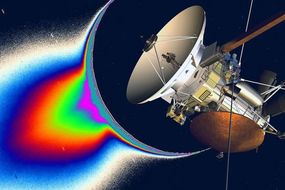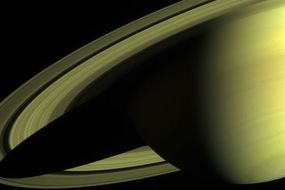NASA astronomy picture of the day: Cassini satellite captures 5 of Saturn’s moons – Express.co.uk
NASA has released a stunning Cassini satellite photograph revealing five moons orbiting ringed planet Saturn.
On July 29, 2011 the NASA and European Space Agency (ESA) Cassini spacecraft’s narrow-angle camera took this snapshot, capturing five of Saturn’s moons, from just above the ringplane. The moons on the left hand side are Saturn’s small moons Janus and Pandora, which are respectively 111 miles and 50 miles (179 and 81km) across.
In the middle is the shiny 313 mile (504km) diameter moon Enceladus.
Studying the orbits of these moons can reveal their origins
Second left is Mimas, 246 mile-wide (396km) across, seen just next to Rhea.
Cut-off by the right edge of the frame, Rhea is Saturn’s second largest moon at 949 mile-wide (1,528km) diameter.
The incredible NASA astronomy picture of the day coincides with the news that 20 new moons have been discovered surrounding Saturn.
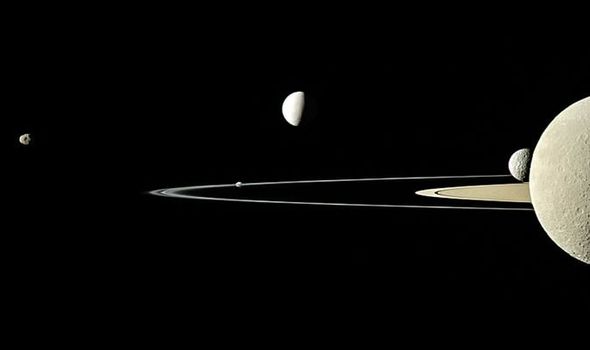
NASA astronomy picture of the day: The space agency has released a stunning image of Saturn (Image: NASA)
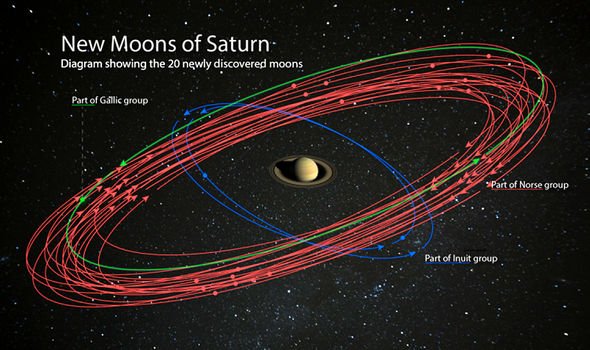
NASA astronomy picture of the day: 20 new moons have been discovered surrounding Saturn (Image: NASA)
This brings the total of Saturn’s outer satellites to 82 known moons.
A NASA spokesperson said: “Since Jupiter’s moon total stands at 79, Saturn is the Solar System’s new moon king.”
The newly-announced Saturnian satellites are all very small, 3 mile (5km) across, and most are in retrograde orbits inclined to Saturn’s ringplane.
Two of the prograde moons are closer to the planet and take about two years to travel once around Saturn.
READ MORE
-
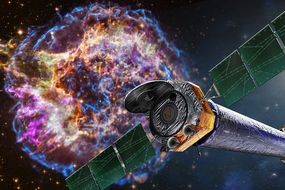
NASA news: Space agency releases stunning supernova shock wave video
The more-distant retrograde moons and one of the prograde moons each take more than three years to complete an orbit.
Dr Scott Sheppard, of the Carnegie Institution for Science, said: “Studying the orbits of these moons can reveal their origins, as well as information about the conditions surrounding Saturn at the time of its formation.”
The outer moons of Saturn appear to be grouped into three different clusters in terms of the inclinations of the angles at which they are orbiting around the planet.
Two of the newly discovered prograde moons fit into a group of outer moons with inclinations of about 46 degrees called the Inuit group, as they are named after Inuit mythology.
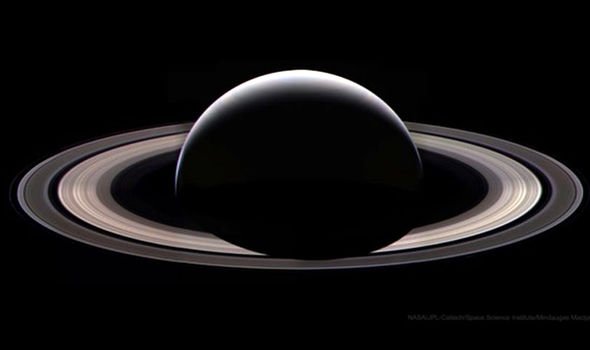
NASA astronomy picture of the day: Saturn has been described as the ‘jewel’ of the Solar System (Image: NASA)
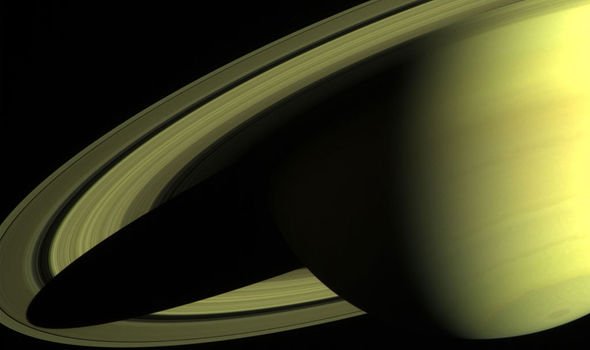
NASA astronomy picture of the day: Saturn now has 82 known moons (Image: NASA )
These moons may have once comprised an ancient larger moon broken apart in the distant past.
Likewise, the newly-announced retrograde moons have similar inclinations to other previously known retrograde Saturnian moons, indicating they are also likely fragments from a once-larger parent moon that was broken apart.
These retrograde moons are in the Norse group, with names coming from Norse mythology.
One of the newly-discovered retrograde moons is the farthest known moon around Saturn.
Dr Sheppard said: “This kind of grouping of outer moons is also seen around Jupiter, indicating violent collisions occurred between moons in the Saturnian system or with outside objects such as passing asteroids or comets.”
How to help NASA name the 20 newly-discovered moons of Saturn:
Participants can submit their suggested names for Saturn’s new moons tweeting their ideas and their reasons to @SaturnLunacy.
The inclusion of photos, artwork and videos are also strongly encouraged.
NASA also wish competitors to include the hashtag #NameSaturnsMoons.
The contest ends on Friday, December 6.
